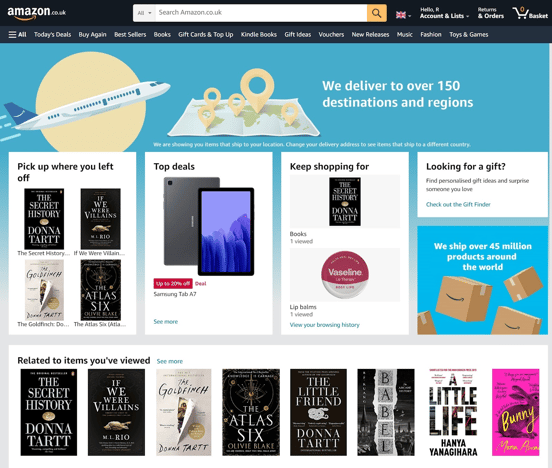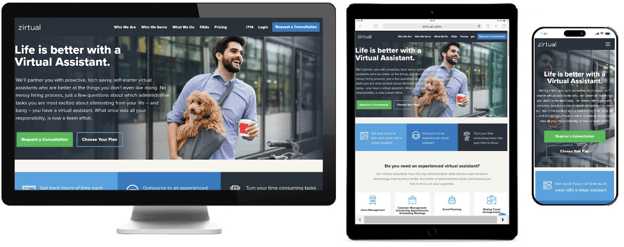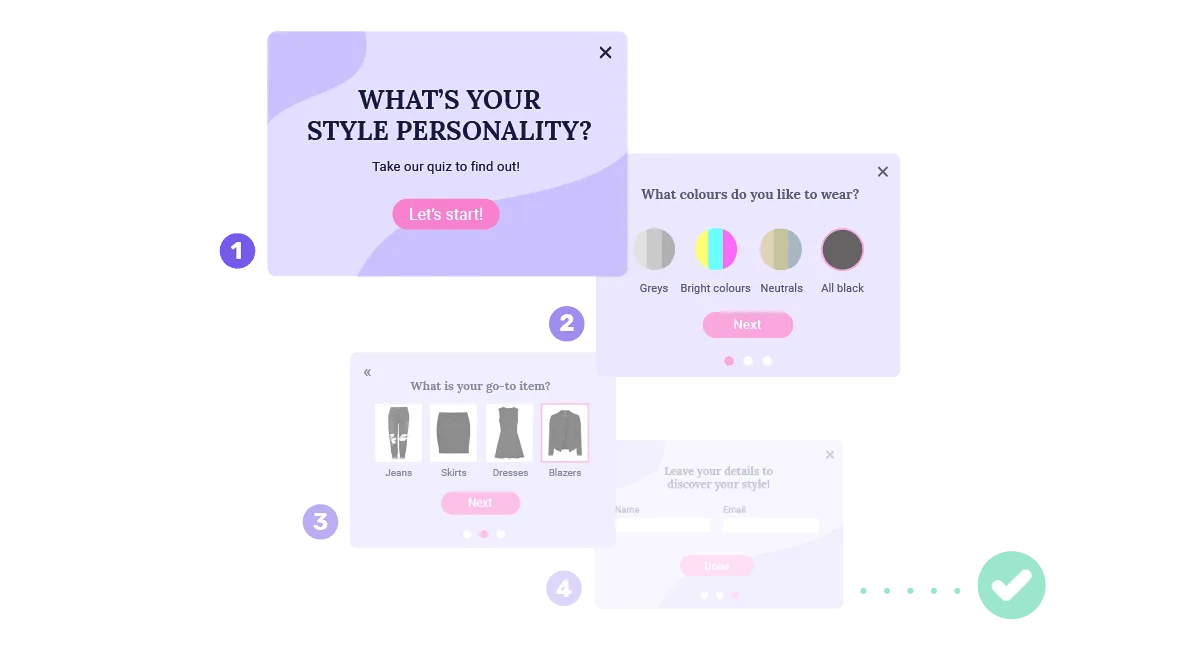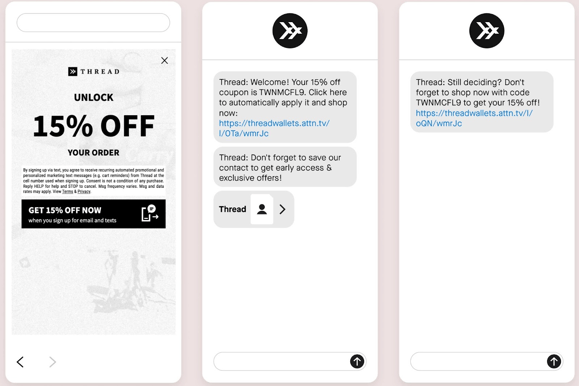Attracting new customers is one thing, but ensuring they will return and continue to purchase more of your products is another. So, what's the best way to improve customer retention in your eCommerce store? .png?width=2240&height=1260&name=Blog%20visuals%20(57).png)
Consistently bringing value to your customers is one of the simplest ways to retain them. It can go a long way, but you still need a strong customer retention plan to ensure you can build a meaningful support network in the long run.
In this post, you'll learn 7 proven ways to increase customer retention for your eCommerce business. We'll also discuss the industry's best practices, advice, and examples to ensure you get the desired result.
By the end of this read, you will better understand how to nurture your current customer base and provide an experience with coming back.
1. Use hyper-personalization
2. Focus email marketing efforts on accessibility & privacy
3. Provide interactive content
4. Drive customer loyalty with SMS marketing
5. Create compelling content
6. Build a flourishing brand community
7. Go the extra mile to delight customers
Conclusion
7 Excellent ways to Increase Customer Retention For eCommerce
Customer retention is about nurturing customer relationships — building trust, and turning a first-time customer into a loyal brand advocate. Here are a few of the effective techniques to make that possible.
1. Use hyper-personalization
Personalization is a popular strategy in digital marketing. It allows business owners and marketers to design a unique shopping experience for every customer and prospect.
The traditional method uses audience data and insights from the site's data analytics to understand the following:
💎 Who their customers are (individually)
💎 What are the customers' needs and preferences are
💎 Where, when, and how they've engaged with your brand, product, and website
You can use the information to personalize email campaign messages, knowledge base, and more. If you want to stand out more, then hyper-personalization is your ally.
Use modern technologies like artificial intelligence, machine learning, and big data to uncover deeper insights and hidden patterns of consumers' behavior and interactions. As a result, you can consistently generate relevant information that your customers find useful.
Amazon, a popular eCommerce platform, is a great example because it uses hyper-personalization on every aspect of its website's user experience and customer journey. Look at its homepage, and you can immediately feel that it's tailored for you.

It connects the purchase history with browsing data, so its algorithm will only suggest products that customers will likely buy and need. It also features item-based collaborative filtering (a.k.a frequently bought together) to display product listings based on the user's past purchased item and other people who bought the same product.
Key takeaway: Personalized experiences create a positive emotional connection
Consumers want to feel valued and understood. That's why personalization is the future of eCommerce. Provide an excellent customer experience and ease your mind that your customers will form a deeper connection with your brand.
2. Focus email marketing efforts on accessibility & privacy
Is email marketing still relevant in 2023? The answer is a simple yes.
According to research, 59% of customers say marketing emails influence their buying choices. Therefore, it remains a strong marketing strategy to stay in touch with your prospects and customer base.
The marketing team traditionally uses emails for customer acquisition. But because of its effectiveness in improving customer relationships, it has also become an invaluable tool to strengthen the eCommerce retention rate.
There are plenty of new trends to double up your email marketing campaign's engagement and conversion rate. But we recommend prioritizing first its accessibility and privacy.
2.1. Accessibility
Accessibility is all about convenience. Since people use different devices, creating a responsive and intuitive reading experience for each device type is better. It will help viewers to read, understand, and engage with your marketing email.
If your email campaign includes a landing page, you must also optimize the web page for readability. One example of a landing page is Zirtual, a virtual assistant service for entrepreneurs and small teams.

No matter what device you use, it remains responsive and glitch-free. It's a plus that its content is easy to access and read.
Many appreciate the dark mode option. The main reason is it reduces the blue light from devices' screens, which helps to improve sleep quality. It can also provide the following benefits:
✅ Extends the device's battery life
✅ Make image-heavy website design looks professional
✅ Beneficial for someone with low vision and light sensitivity
2.2. Privacy
Privacy is a significant concern for consumers. They want to know what information they need to share and how companies will use them. You can communicate it to them by writing a privacy policy.
For example, the medical alert brand’s privacy policy sets a good example because it covers all necessary clauses and explains them clearly and simply. Here’s what it discusses:
- Effectivity date
- What information do you want to collect
- How will you collect and use their information
- Reasons why you collect their personal information
- State if you're going to share or sell their information with other entities
Ensure to link your privacy policy in your marketing emails. You also have to send an individual email to notify customers of the latest changes to your policy. Failing to do so will result in paying a hefty fine.
3. Provide interactive content
There are plenty of fresh ways to increase customer retention through content marketing. We recommend sending interactive content because it motivates your readers to engage with you.
Here are a few ideas you can add:
3.1. Interactive forms
Forms tell users that you’re asking them for a favour by filling up the information. Unless you make the experience enjoyable for them, you won’t get them to take action. So make your forms engaging by making them interactive.

With interactive forms, you can break down the information you need into several steps so you don’t scare your visitors away. Plus you can leverage the trigger feature to reduce form friction.
Best of all, you don’t need to call in your tech team to make the form, with our drag-and-drop form builder, you can customize your form to suit your needs and the interest of your audience.
3.2. Shoppable videos
Embedding a shoppable video is the ideal interactive element for SaaS brands. Humans are visual creatures, so it's an easier way to explain everything about the product to get it sold.
Moving from one page to another can be tiring for users. You can use shoppable videos to make the buying experience easier for them. The best part? Some shoppable videos, like giosg's, comes with an insight feature where you’ll learn about the click rates, conversion rates, and buying behavior of your prospects and clients.
3.3. Games
Everyone knows that a game can be deeply engaging. So, take advantage of it by introducing gamification in your content.

You can add any fun games. Just make sure that the mechanics are simple and motivating. You can also include a handy tool to help readers win the game. One example would be to offer a crossword game with an embedded word game helper to find the highest-scoring words.
Best Practice: Add one interactive element per content
Interactive content is visually captivating and fun. Add the right element, and it will surely go viral. Focus on one interactive element per content. It will prevent confusion for your readers.
4. Drive customer loyalty with SMS marketing
Like email, SMS is an indispensable tool for businesses to communicate with their loyal customer base. It has a higher open rate than email and works best for marketing messages that are time-sensitive or require immediate action.
It's undeniable that SMS marketing is an effective customer retention strategy. And it would be best if you worked on it alongside your email marketing for maximum customer engagement. Here are the tested ideas on how you can persuade your loyal customer base to trust your SMS campaigns and opt-in:
4.1. Offer a unique experience
According to Gitnux, consumers will likely opt-in to a brand's SMS marketing campaign if they offer a unique experience. Customer experience has a broad scope, so you have plenty of options to explore.
Since bad experiences can cause serious damage to one's reputation, prioritise improving the customer service experience. Send bulk SMS messages to create two-way communication between your brand and customers. Here are a few functions you can include:
- Use it as an instant notification to keep customers in the loop of the latest progress of their order.
- Include special discounts with your abandonment campaigns to encourage customers to complete the transaction.
- Give the option to contact customer service via SMS message.
For the latter, most consumers have busy schedules. Therefore, giving them an easy option to raise the question and get a quick response will be highly appreciated. It's also helpful whenever they encounter a problem (shipping, payment, or delivery). Your customer support team can resolve them with a 1:1 experience.
4.2. Provide special offers
Exclusive offers entice customers to sign up for your campaigns, for example on your website. Most eCommerce retailers include it in their welcome series to inspire loyalty and retention.

Some also use it to re-engage previous customers that aren't active anymore. Not all offers should be in the form of discount coupons or gifts. You can also provide helpful content like:
💡 Introduce new product uses
💡 Stories that highlight your brand values
💡 New product or feature announcements
You can also inform them how your product/service can help them by giving advice.
Let's say you're offering coaching services for professionals seeking a new job opportunity. You can provide them with career advice and other essential interview guides to help them secure their dream job.
Another way you can provide special offers is through pop-ups and personalized recommendations. We have both pre-designed templates and start-from-scratch options. With these, you can accurately target users using triggers like open on click, time on page, and visitor geolocation.
Additionally, taking advantage of personalized recommendations will help increase your ROI and the loyalty of your customers.
4.3. Collect customer feedback
You read it right. You can use an SMS or your website marketing campaign to request and gather customer feedback. Send a request directly after they've completed the transaction or received the product. This way, their experience with the brand is still fresh in their memory.
.png?width=2240&height=1260&name=Blog%20visuals%20(49).png)
Key takeaway: Listen to your customers & improve
Requesting feedback is an incredible way to encourage your customers to voice out their honest opinion about your brand or product. As an entrepreneur, you can use these insights to better understand and meet customer expectations (short and long-term). You can also take it as an opportunity to learn where your customers want to see some improvements.
5. Create compelling content
Great content may not be a new idea, but it's an important asset. It attracts the right audience to your eCommerce store and persuades them to take action. The only question is, what is considered great content?
There are different characteristics to describe great content. Most of them are engaging, easy to digest, and useful. The word "useful" has a broad definition. Here are different types of content to give you an idea of what useful content looks like and its purpose:
5.1. FAQs
Useful content provides complete and accurate answers to consumers' questions. FAQ (frequently asked questions) is the best content type to create because of its straightforward approach. Your customers can immediately find and access the information they need quickly.
One of the best ways to do this is using an FAQ bot that automates answering the most commonly asked questions quickly and easily.
Another example is Pointerpro, an online assessment builder. Its FAQ section focuses on what its app can do. It's a smart move because it also serves as a complete guide on using the online assessment tool.
The best part of the FAQ is you can discuss any information on it — general info to the most complex topic. Here are a few topics you can include in your site's FAQ section:
💬 Product price listings
💬 User manuals and guides
💬 General (company information, privacy/refund policy, etc.)
5.2. How-to guides
Useful content helps customers to learn something new. How-to guides are the best content type because they help customers accomplish tasks. It includes clear instructions to ensure success.
When writing a how-to guide, list all the sub-tasks necessary to complete it. Next, divide the sub-tasks into sections and start outlining all the steps for each. Be accurate and concise in writing the steps to prevent confusion.
How-to guides are not limited to that function. It can also help customers solve a problem. Take Aloa's nearshore software development guide, for example. The company understands how difficult it is to find and hire local experts. As a solution, they provide all the factors you should look for when choosing the right nearshore software development company.
You can also adopt Estuary's approach, which provides a data integration platforms comparison guide. The guide includes three options and lists their features' differences and similarities.
It's a subtle way to showcase the product's strengths and other advantages over its competition.
Best practice: Publish relevant content consistently
There are more content types available but the most important thing to remember is to publish them consistently. Not only will it help you build a strong brand identity, but it will also widen your reach.
6. Build a flourishing brand community
The world wide web is a noisy place. New things are happening by the second, and most of these changes could be clearer or more manageable. Therefore, having a solid brand community will allow you to reduce the noise and present to your customers what matters most: solutions to their needs or concerns.
When building a community, focus more on the value you want to provide.
.png?width=2240&height=1260&name=Blog%20visuals%20(56).png)
You can also start a conversation so other travellers in the community can share their personal knowledge and experience. It will help your audience understand how to find the perfect destination, score great flight deals, book flights, etc.
Assuming you successfully build a community, the next step is to nurture and let it grow. Offer customer loyalty programs. All community members will receive exclusive access to new products, features, and promotions.
You can also run a referral program so your customers will be encouraged to spread word of mouth. Other types of loyalty programs that you can run are the following:
7. Go the extra mile to delight customers
Exceeding customer expectations is an effective strategy to keep them hooked on your brand. Here are some proven tactics you can implement:
💖 Provide a refund policy
💖 Offer fast delivery service
💖 Tailor the pricing for repeat customers
💖 Offer readily available and efficient customer service
💖 Include flexible return options and speed up the process
Conclusion
The eCommerce industry is growing rapidly. Ensure to focus on increasing your customer retention to have a competitive edge.
The techniques discussed above greatly help improve customer retention for your eCommerce site. All you need is to implement it with your current strategies to create a seamless customer journey and experience.
To determine if it works, here's one of the simplest formulas to do customer retention rate calculation: CRR = ((E-N)/S) X 100
- E = Customers you have at the end
- S = Customers you have at the start
- N = Customers you've acquired during the period you're measuring
Some business owners and marketers aim for a high retention rate. Anything close to 100% indicates that your business is keeping active customers well. However, a rate between 25% to 40% is acceptable in eCommerce.
Using various effective eCommerce tools, you can level up your customer retention marketing game as your performance progresses. Your loyal customer base is your brand's biggest asset. Ensure to take care of them and exceed their expectations.
If you need help, you can boost your customer retention rate with giosg. Request a demo to see the benefits it stores for you.
Author bio
Burkhard Berger is the founder of Novum™. He helps innovative B2B companies implement revenue-driven SEO strategies to scale their organic traffic to 1,000,000+ visitors per month. Curious about what your true traffic potential is?